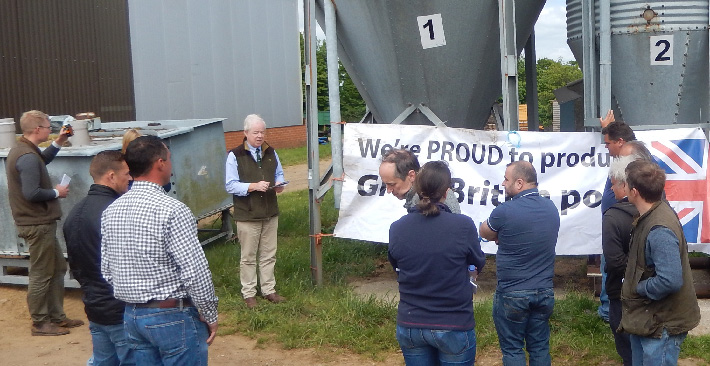As another challenging year draws to a close pig prices are still under pressure with the latest SPP dropping by 0.36p to 142.21p compared with 149.78p at the start of the year.
The influential German market has however remained at stand on levels for 10 successive weeks at €1.36, which is equivalent to 122p in our money but still undercuts the UK market to a significant extent.
Weekly contribution prices have in the main stayed at similar levels between 129.5p and 134p and although some pigs have been rolled, thankfully fewer than originally feared, finding homes of one sort or another.
The spot market remains extremely quiet with the majority of pigs being sold on contract with reports of one-off spot prices in the 130p-135p range but regular spot sellers were able to earn a few coppers more than this.
Unfortunately the cull sow market had a sting in the tail dropping by 4p and worth between 56p-60p due to indifferent European demand despite the Euro improving in value and trading on Friday worth 90.16p compared with 89.88p a week ago but the European cull sow market appears to be suffering from excess numbers which might signal cutbacks in finished pig production later on in the New Year……..we shall see.
The AHDB 30kg and 7kg weaner prices both posted modest gains with the 7kg average up by £1.27p per pig to £35.24 and the 30kg average also slightly firmer up by .37p to £43.61p making 30kg pigs look a bargain as it costs far more than £8 per head to take a pig from 7kg to 30kg!
Grain prices are still too expensive in relation to finished pig returns with UK ex farm spot feed wheat trading at an eye watering £171.2/t and on the futures market London feed wheat traded for January at £173.85/t and May at £178.90/t. UK soya meal prices have however eased with 48% Brazilian soya traded at £317/t compared with £324/t earlier in the month although 34% rape meal is marginally dearer moving up by £2/t to £210/t.
Reports of a slowdown in Russian wheat exports may also put a spanner in the works coupled with forecasts that 2018/19 total exports will be below the 2017/18 levels so perhaps more bulls rather than bears will appear in this sector in the months ahead?
And finally, latest press reports are indicating the possibility of a Brexit “no deal” scenario and concerns over the effect that this is likely to have on the UK pig industry where pig meat trading is almost entirely confined within the EU.
This will mean finding new tariff free markets, many of which will be more remote than mainland Europe and will need to compete with lower welfare, cheaper product from the US, Canada, South America to name but three potential competitors.
This could be a tall order but now might perhaps be the time to start looking at global pig meat trading options before the end of March 2019, although this could prove to be a steep and expensive hill to climb.




